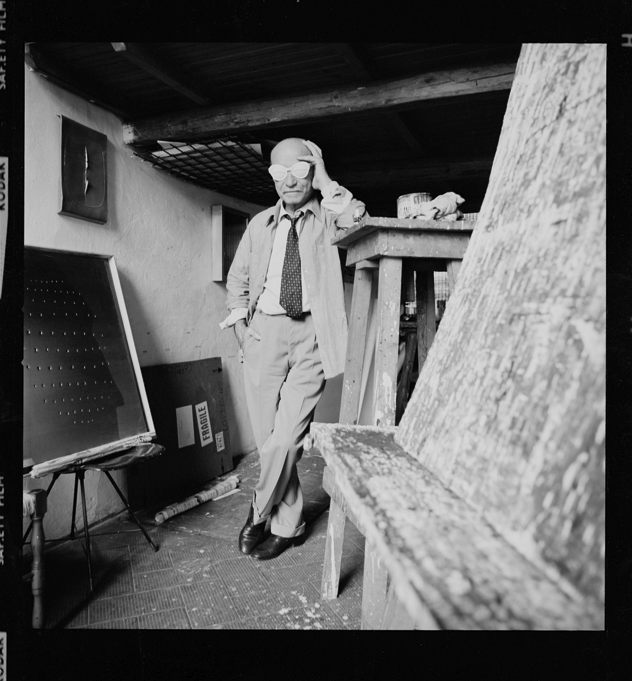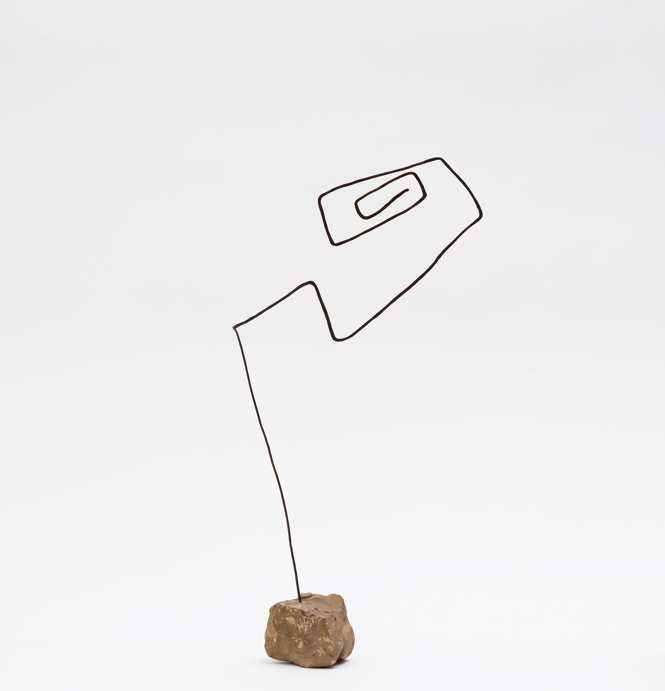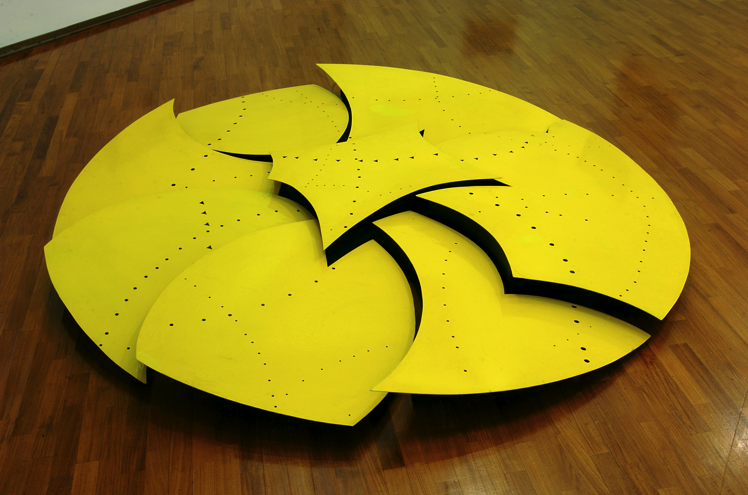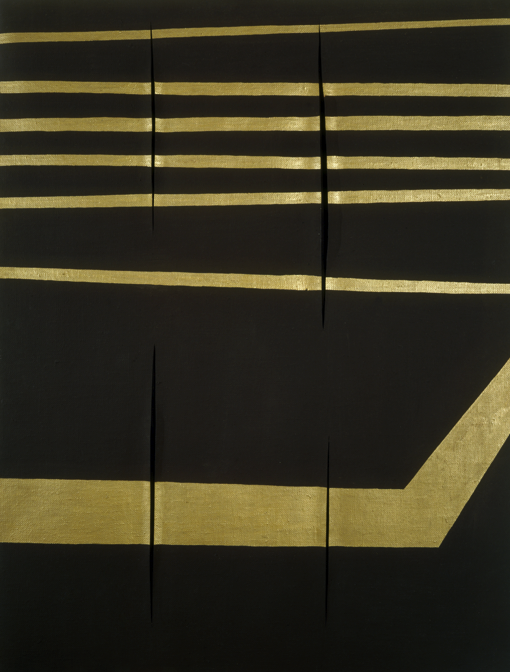LUCIO FONTANA “RETROSPECTIVE”
The major Lucio Fontana retrospective, now presented at Paris Museum of Modern Art, is the first one in France since 1987. Following a quite classic chronological path, it nevertheless offers an original approach to the Italian artist’s career, and presents a large selection of rarely seen works.

Lucio Fontana et ses « lunettes spatiales », 1965. Photographie Lothar Wolleh © Dr. Oliver Wolleh © Fondazione Lucio Fontana, Milano / by SIAE / Adagp, Paris 2014.
Born in 1899 in Argentina, Lucio Fontana (1899-1968) was the son of an Italian-born trained sculptor. Spending most of his life in Milan, Fontana explored all the possibilities offered by sculpture (terracotta, ceramic, mosaic) and extensively collaborated with architects.

Retrato di Teresita (Portrait de Teresita), 1940, collection Fondazione Lucio Fontana, Milan © Fondazione Lucio Fontana, Milano / by SIAE / Adagp, Paris 2014.
Becoming of one the first Italian abstract artists in the 1930’s, he sought refuge in Argentina during World War II. Back in Milan after the conflict, he became the main figure of the Spatialist Movement, which he extensively defined in his Manifestos. Spatialism used light and “real” space (in opposition to virtual space) as basic elements, in order to create a new kind of art, an art that would allude to the space age (which fascinated Fontana) but which would also actively connect to the surrounding world.

Concetto spaziale (Concept spatial), 1952 GAM- Galleria Civica d’arte moderna e contemporanea di Torino © Fondazione Lucio Fontana, Milano / by SIAE / Adagp, Paris 2014.
In 1949, Fontana thus created his first Concetti spaziali (Spatial Concepts), a series of punctured canvases and, about ten years later, he would produce the Tagli series, the famous incisions on canvas that gained him a worldwide reputation.
Read more ...






